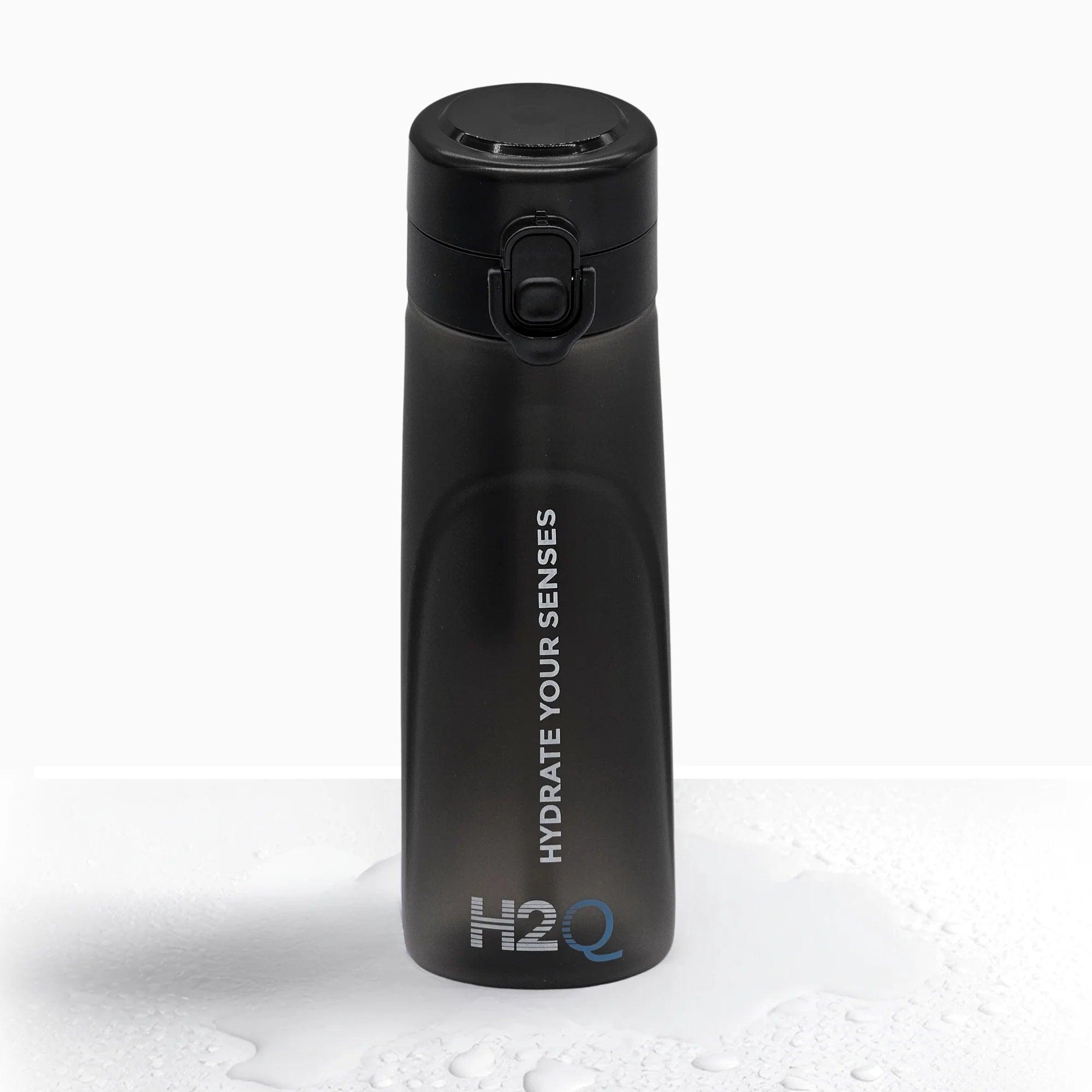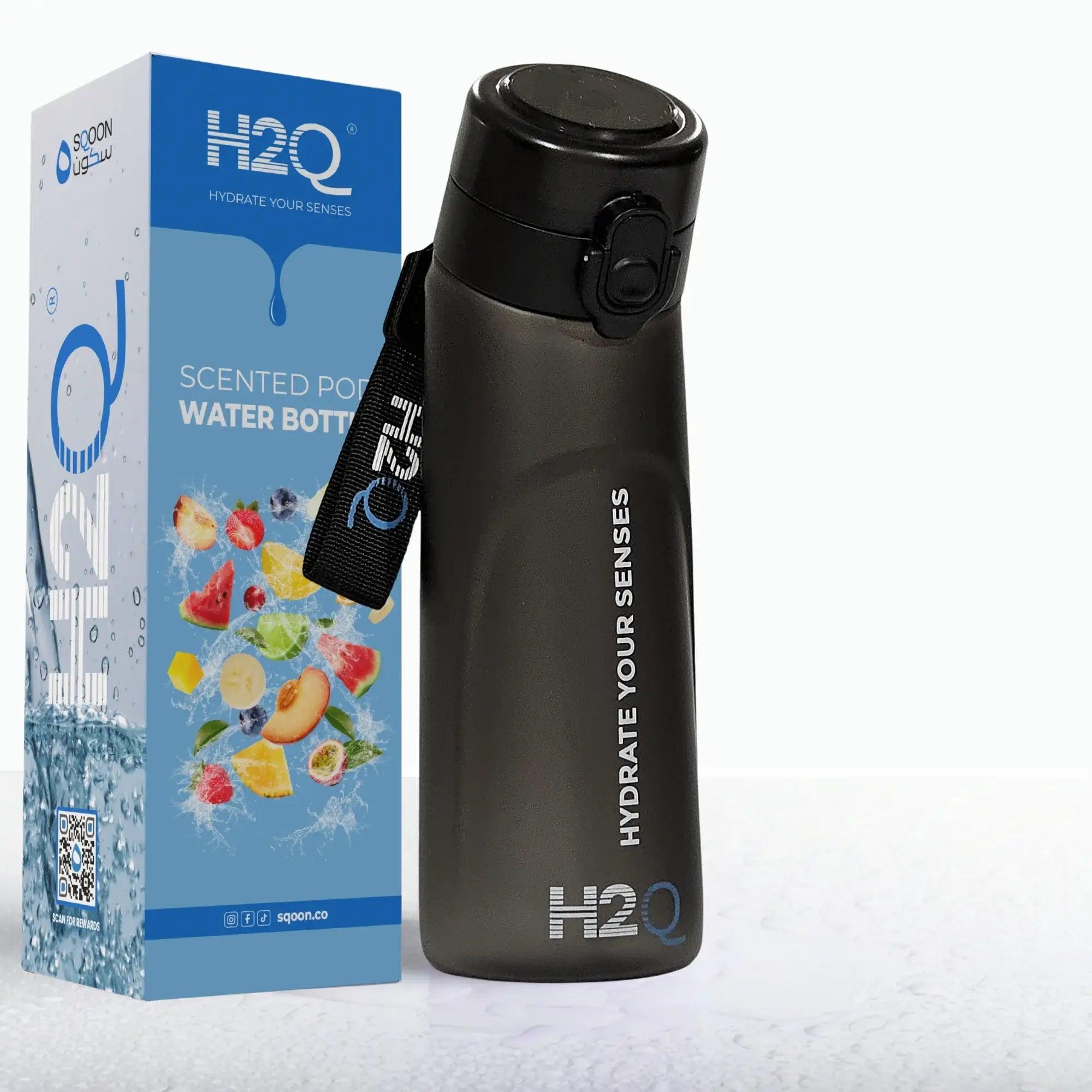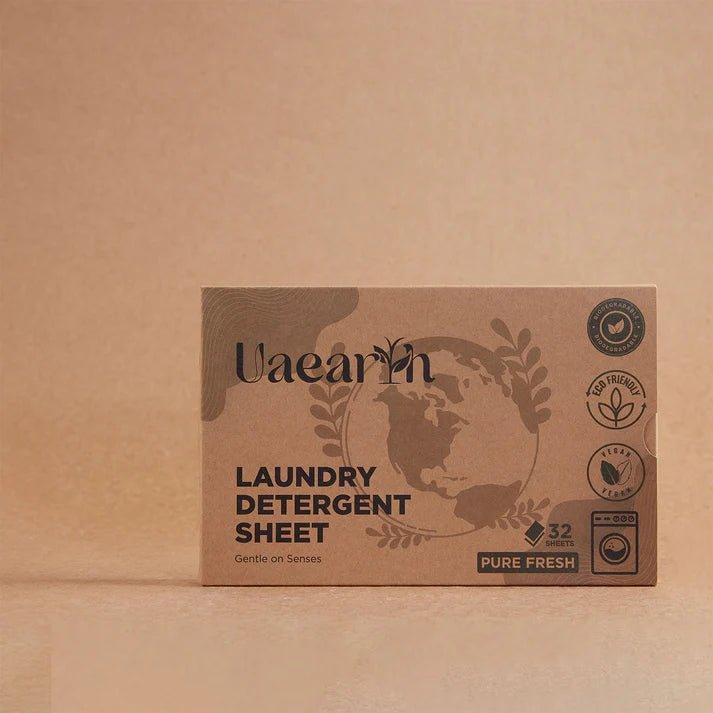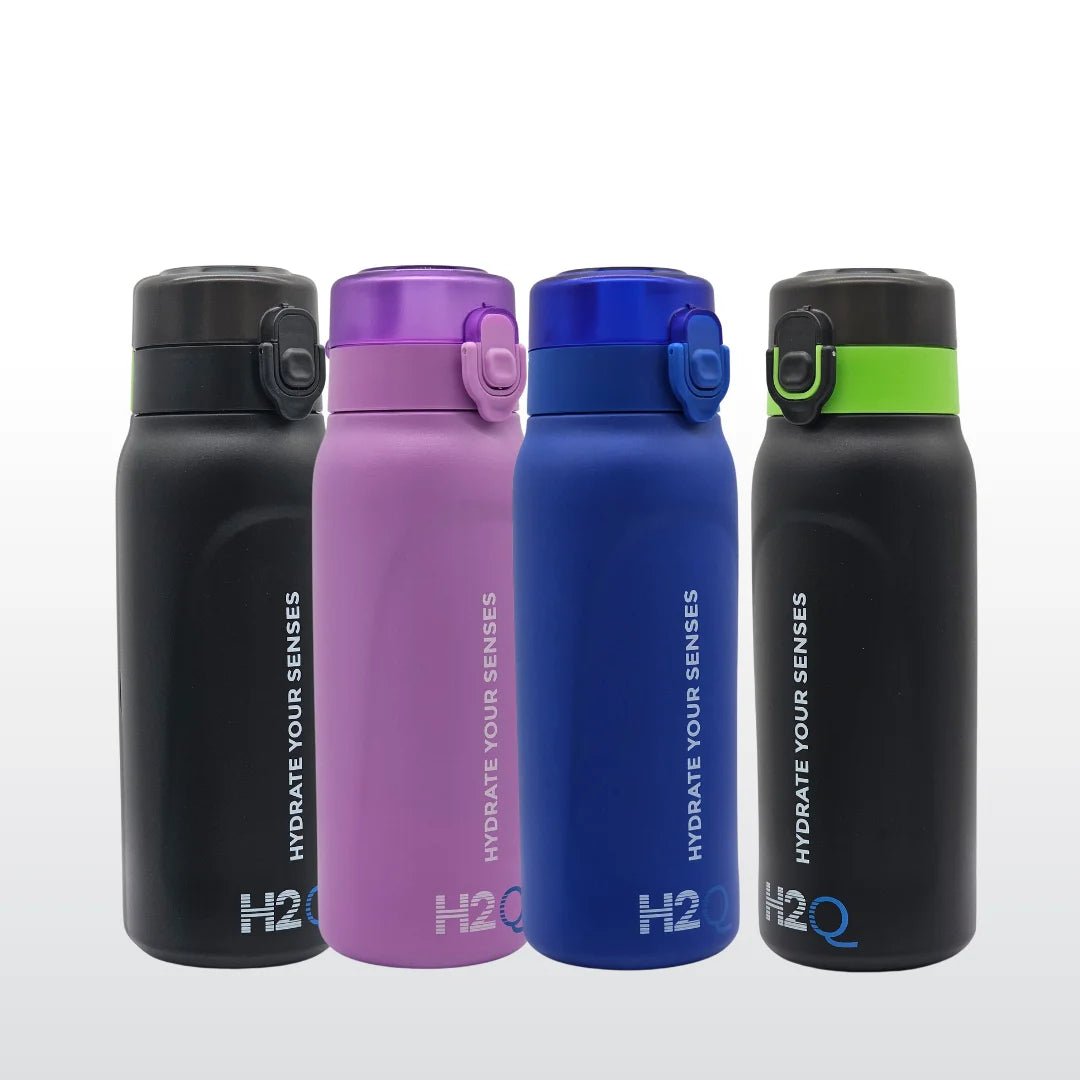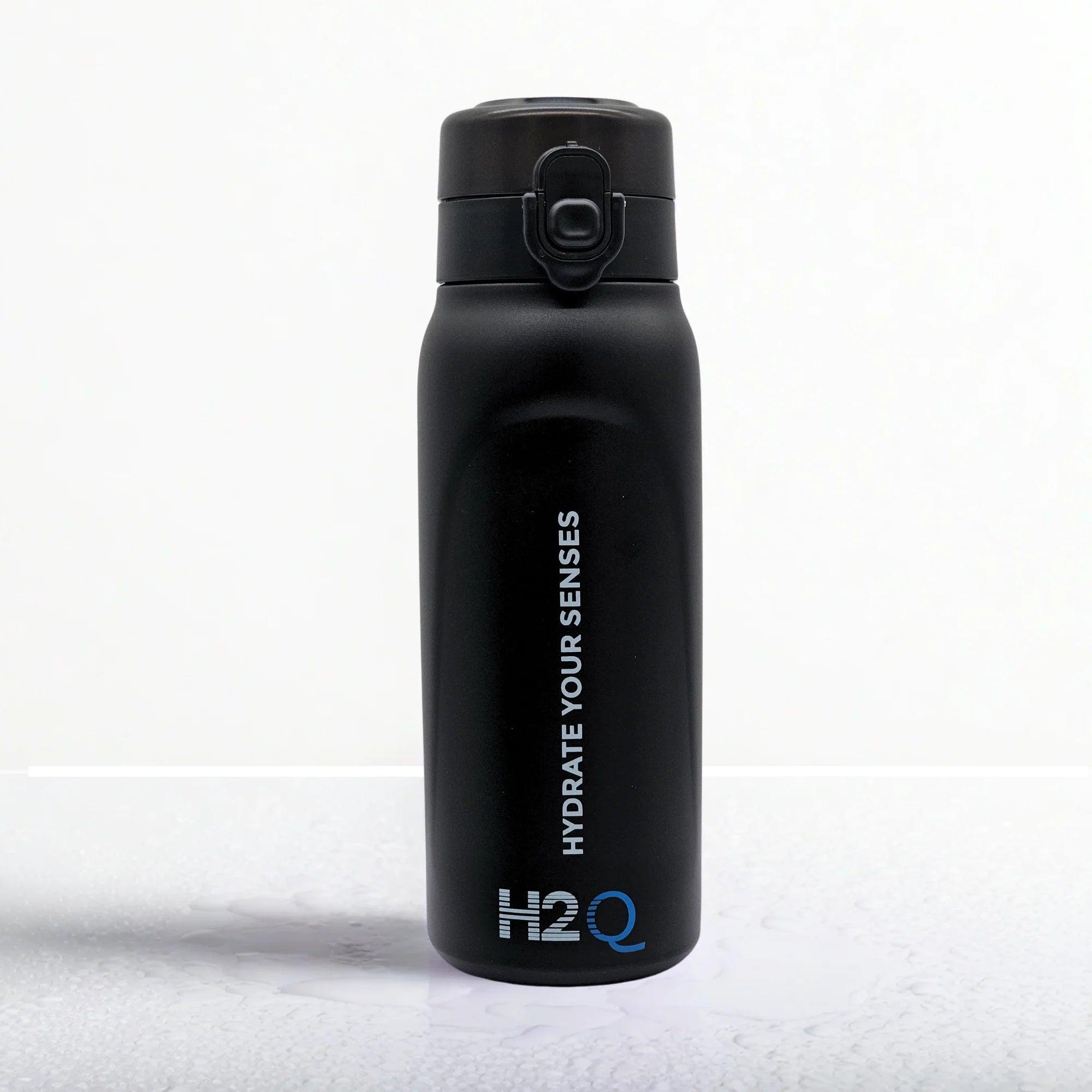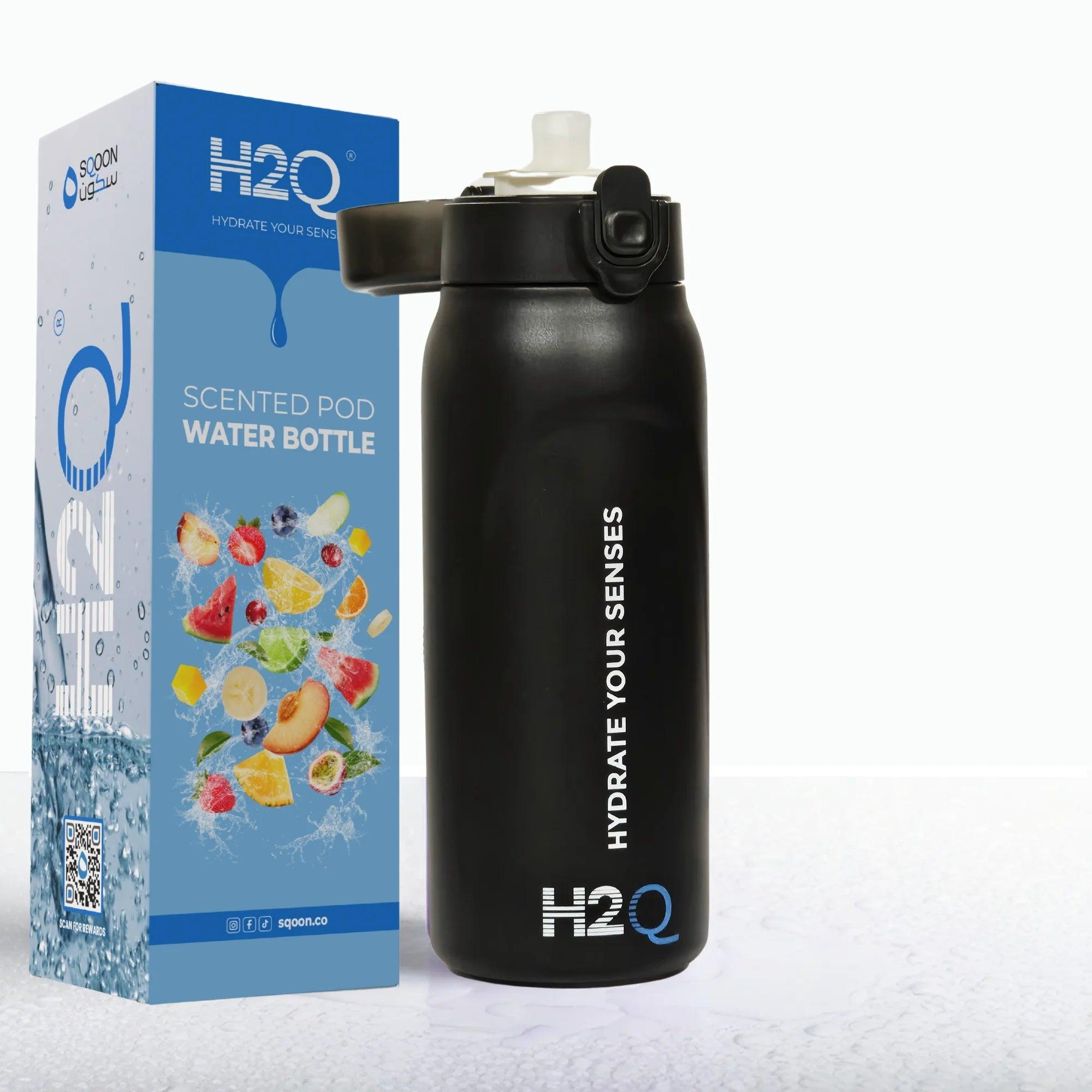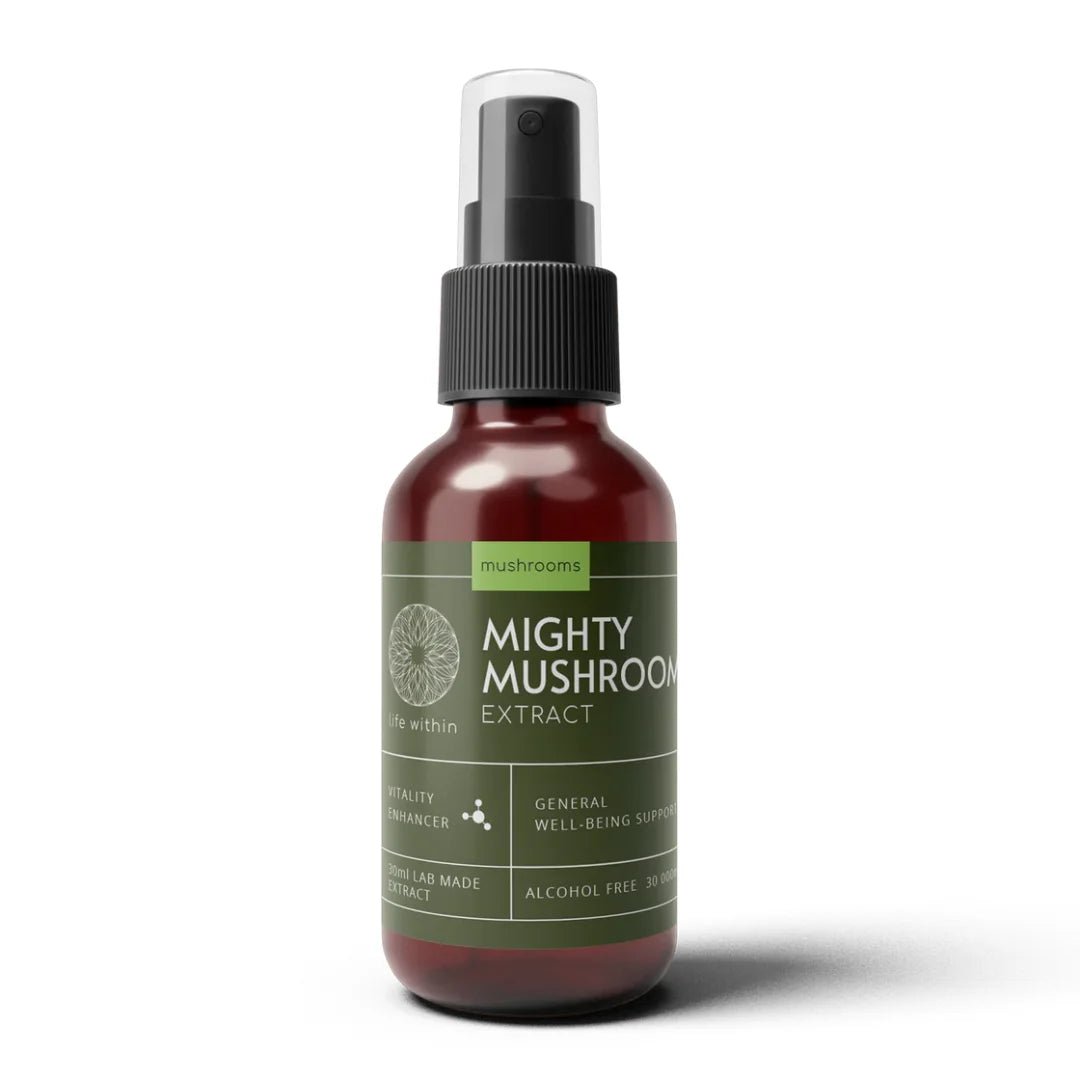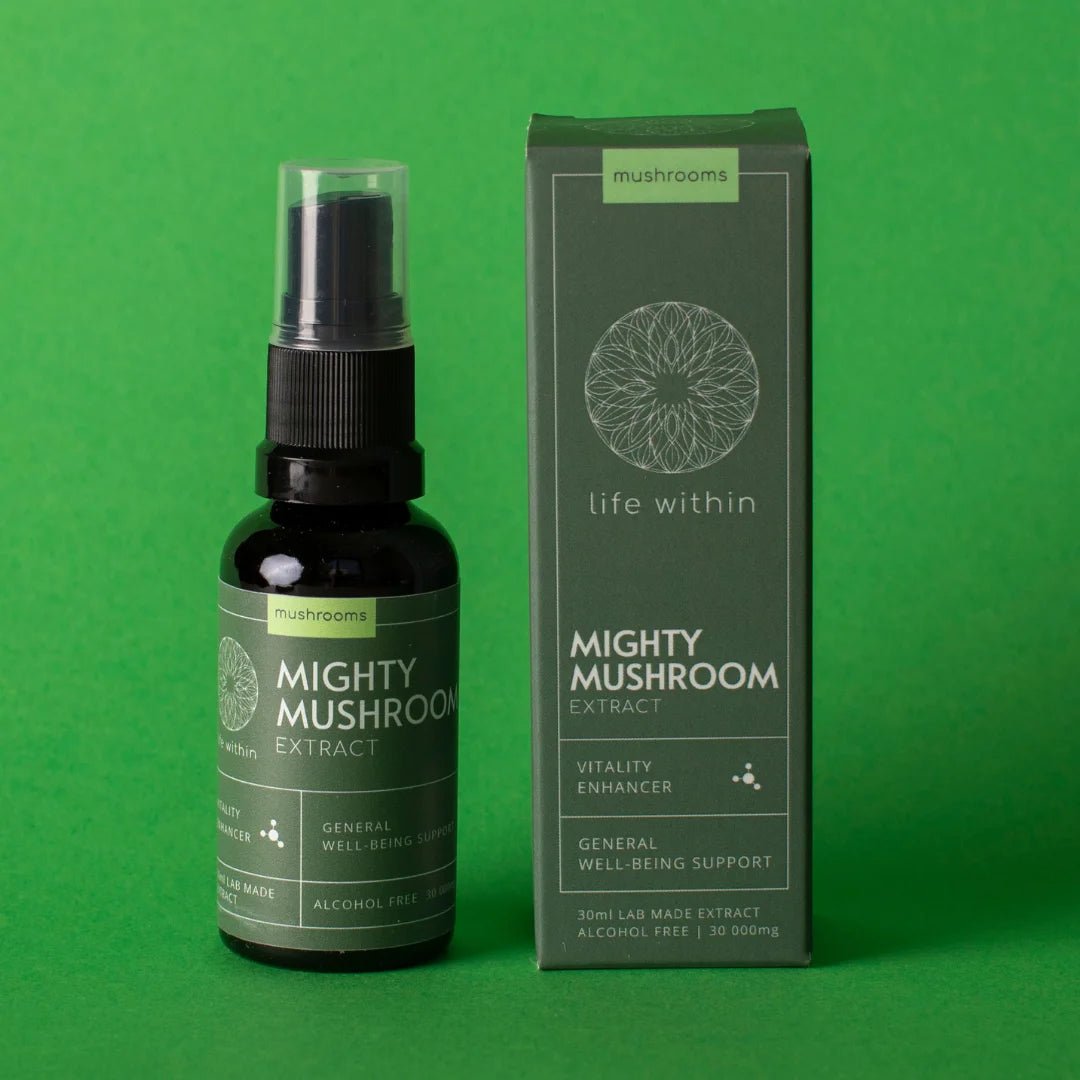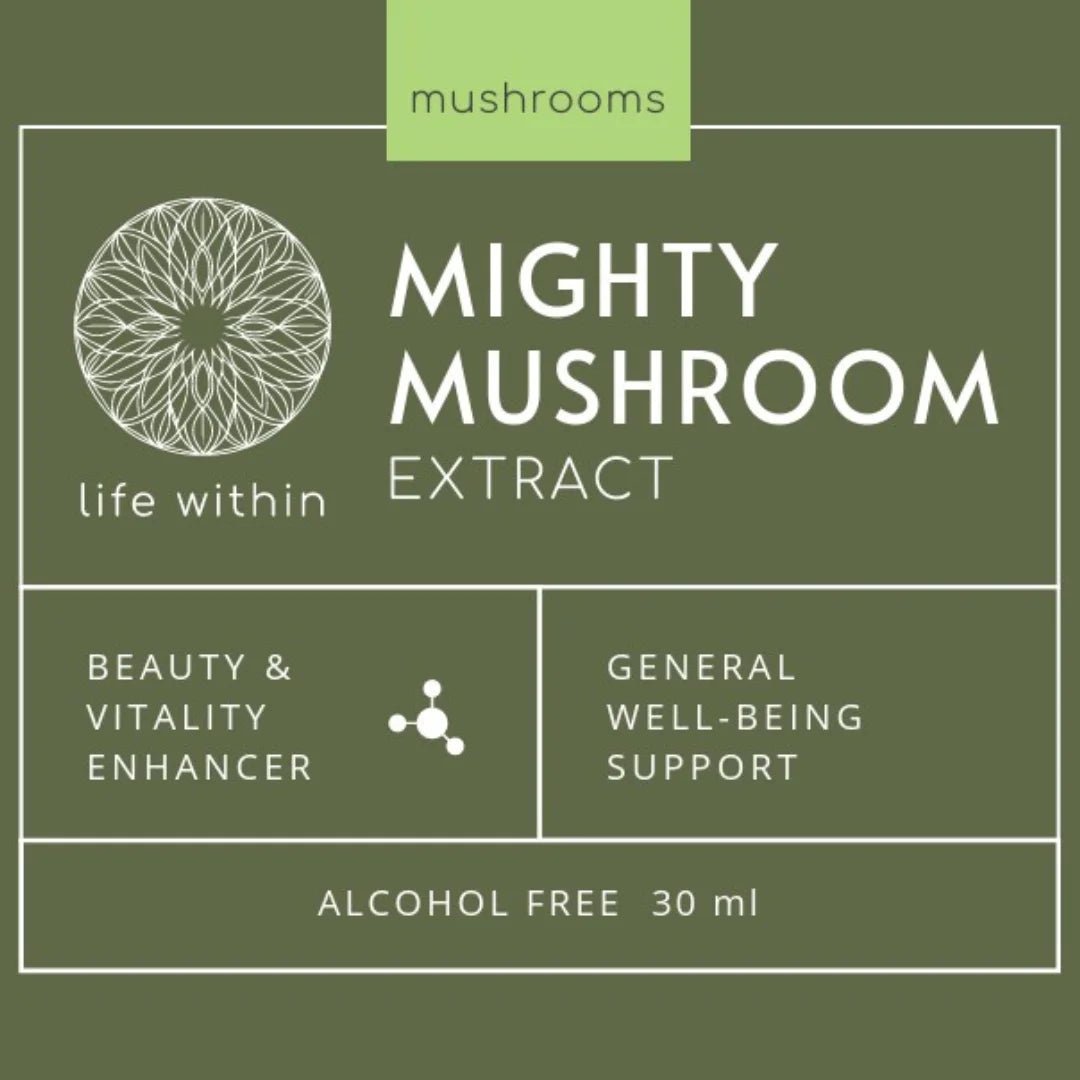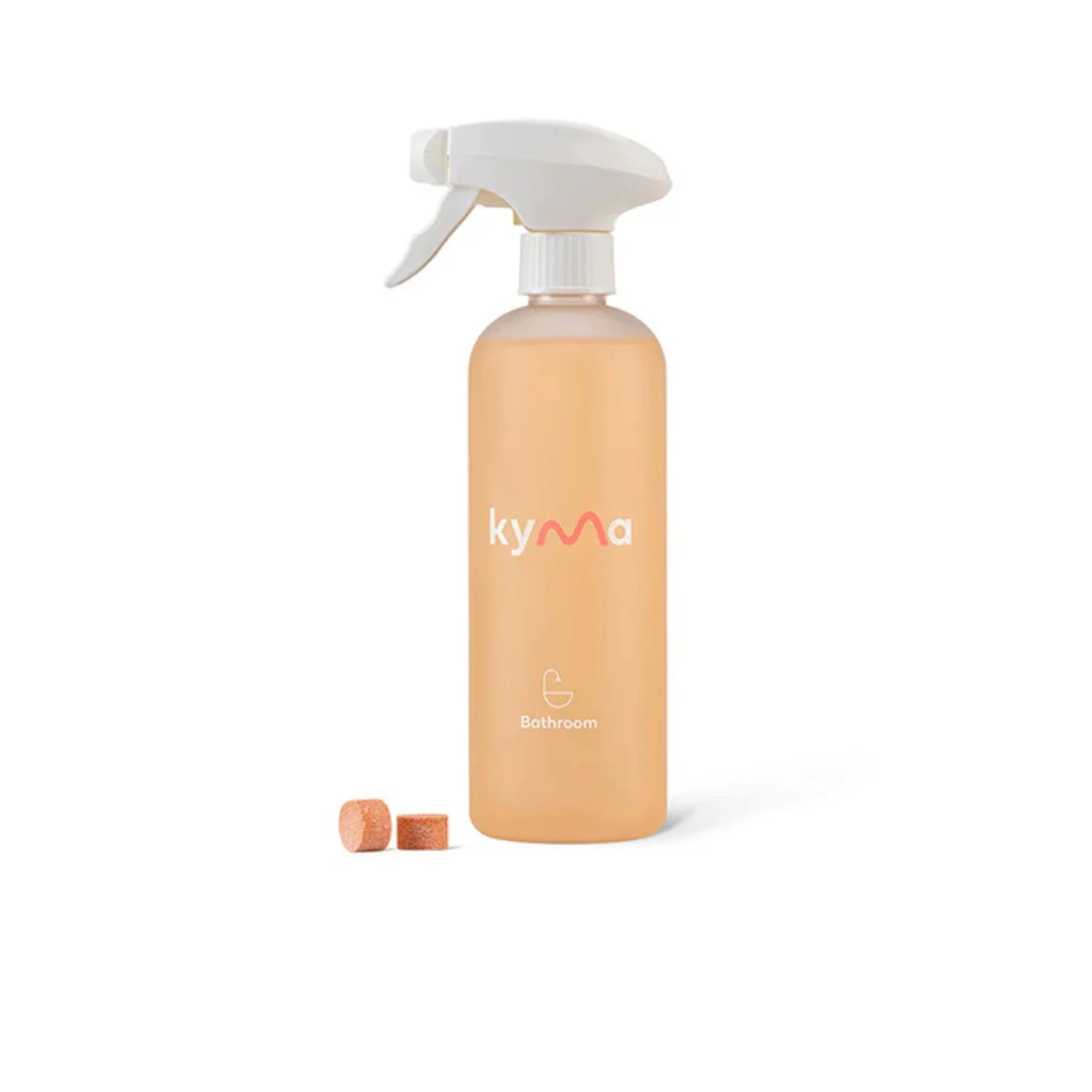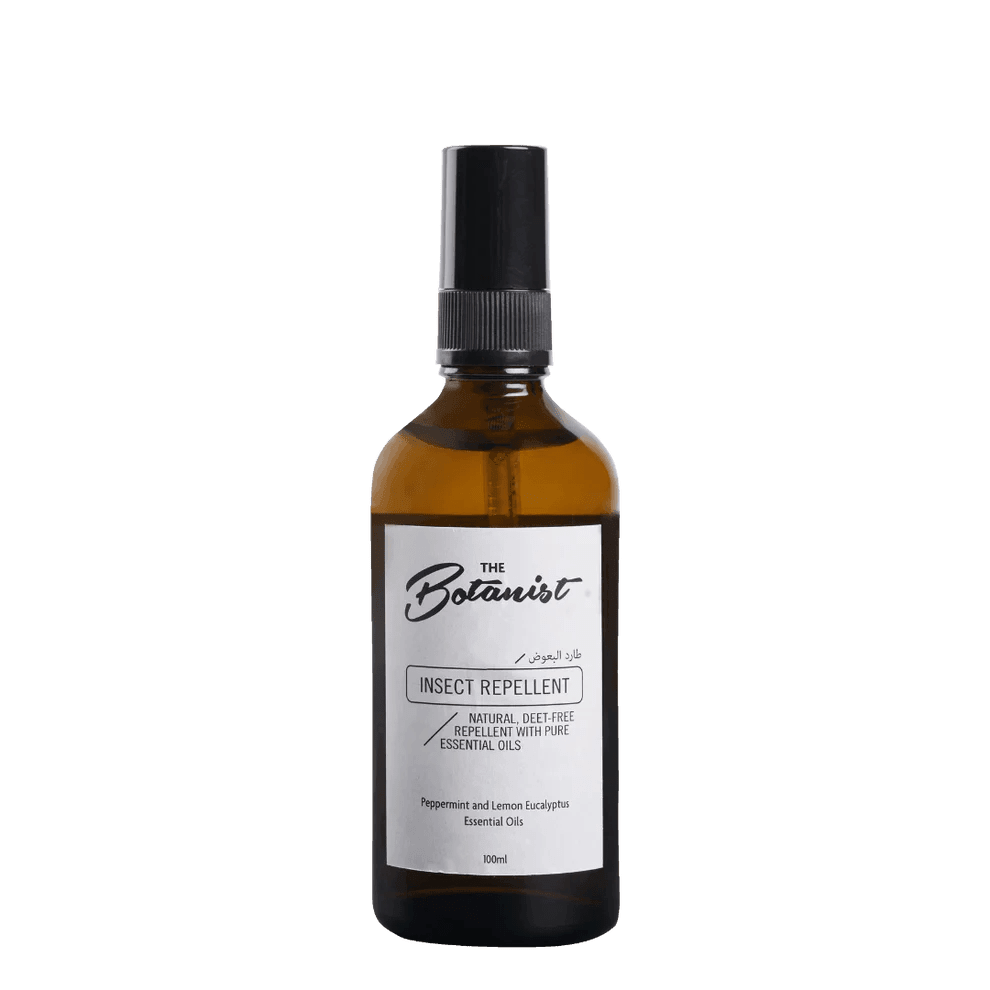

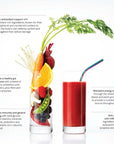


EIMELE ESSENTIAL RAINBOW TRAVEL PACK (30 Sachets)
Nutrition in Full Colour
Essential Rainbow is a complete, plant-based daily superfood blend designed to fuel wellness from within. Containing 77 nutrients across seven functional blends, this berry-flavoured powder delivers comprehensive nutrition through every colour of the rainbow. Expertly formulated to promote gut health, boost energy, and support immunity, it’s your everyday foundation for balance and vitality, now in a travel-ready 30-day pack.
How it Works
- Promotes a healthy gut microbiome with pre-, pro-, and postbiotics.
- Provides antioxidant protection from polyphenols and carotenoids.
- Supports sustained energy and overall wellbeing with plant proteins and omegas.
- Delivers 23 essential vitamins and minerals, including Vitamins A, C, D, E, and B12.
- Offers anti-aging and anti-inflammatory benefits through potent phytonutrients.
How to Enjoy
- Add 1 sachet (12g) to at least 250 ml of cold water, juice, or a smoothie.
- Mix well and drink immediately.
- Enjoy 1 sachet daily or as directed by your healthcare professional.
- Each pack includes a 30-day supply
Comprehensive nutrition in every colour - powerful, portable, and powered by plants.
- Promote brain health with DHA, ALA, EPA, turmeric, and polyphenols.
- Inhibit tumour growth with glucosinolates from cabbage and broccoli.
- Maintain blood sugar balance with anthocyanins from cranberries, blueberries, and blackcurrants.
- Promote gut health with prebiotics, green banana starch, probiotics, and postbiotics.
- Enhance immunity with mushroom polysaccharides, astaxanthin, and beta carotene.
- Protect vision with pumpkin, goji berries, and spinach.
- Support healthy blood vessels with antioxidants and polyphenols.
- Deliver anti-aging benefits with powerful antioxidants.
- Prevent DNA mutations with polyphenols and antioxidants.
- Combat oxidative stress and inflammation for long-term wellness.
Energy: 158kJ (38Cal)
Protein: 2.9g
Fat, Total: Less than 1g
- Saturated: 0.3g
- Trans: Less than 0.1g
- Polyunsaturated: 0.3g
- Omega 3: 105mg
- EPA: 3mg
- DHA: 87mg
- ALA: 15mg
- Monounsaturated: 0.1g
Carbohydrate: 3.8g - Sugars: 2.2g
Dietary Fibre: 2.5g
Sodium: 81mg
Potassium: 23mg
Vitamin A: 375mcg RE (50% RDI*)
Thiamin: 2.2mg (200% RDI)
Riboflavin: 2.0mg (118% RDI)
Niacin: 15.0mg (150% RDI)
Pantothenic Acid: 3.5mg (70% ESADDI)
Vitamin B6: 2.0mg (125% RDI)
Folate: 260mcg (130% RDI)
Vitamin B12: 4.0mcg (200% RDI)
Vitamin C: 80mg (200% RDI)
Vitamin D: 2.5mcg (25% RDI)
Vitamin E: 10mg α-TE (100% RDI)
Biotin: 50mcg (167% ESADDI)
Calcium: 150mg (19% RDI)
Iodine: 75mcg (50% RDI)
Iron: 6mg (50% RDI)
Magnesium: 100mg (31% RDI)
Zinc: 12mg (100% RDI)
Manganese: 1.25mg (25% ESADDI***)
Copper: 0.75mg (25% ESADDI)
Selenium: 52mcg (74% RDI)
Chromium: 30mcg (15% ESADDI)
Probiotics: 2 billion CFU^
* RDI = Recommended Dietary Intake
** ESADDI = Estimated Safe and Adequate Daily Dietary Intake
Energy: 1320kJ (315Cal)
Protein: 24.1g
Fat, Total: 5.6g
- Saturated: 2.3g
- Trans: Less than 0.1g
- Polyunsaturated: 2.3g
- Omega 3: 877mg
- EPA: 29mg
- DHA: 723mg
- ALA: 125mg
- Monounsaturated: 1.0g
Carbohydrate: 31.6g - Sugars: 18.2g
Dietary Fibre: 20.8g
Sodium: 673mg
Potassium: 188mg
Vitamin A: 3130mcg RE
Thiamin: 18.3mg
Riboflavin: 16.7mg
Niacin: 125mg
Pantothenic Acid: 29mg
Vitamin B6: 16.9mg
Folate: 2170mcg
Vitamin B12: 33mcg
Vitamin C: 667mg
Vitamin D: 20.8mcg
Vitamin E: 83mg α-TE
Biotin: 420mcg
Calcium: 1250mg
Iodine: 625mcg
Iron: 50mg
Magnesium: 833mg
Zinc: 100mg
Manganese: 10.4mg
Copper: 6.25mg
Selenium: 433mcg
Chromium: 250mcg
Probiotics: 16.7 billion CFU
Eimele® Rainbow Vegetable and Fruit Blend (Beetroot, Broccoli, Pumpkin, Wheatgrass, Barley Grass, Cabbage, Prune, Organic Wholefood Nutrients Blend [Spinach, Broccoli, Carrot, Sweet Potato, Orange, Apple, Strawberry, Sunflower Seed, Shiitake Mushroom, Maitake Mushroom], Raspberry, Strawberry, Pomegranate, Elderberry, Blackcurrant, Blueberry, Cranberry, Acai, Goji), Plant Protein Blend (Pea, Faba Bean, Flaxseed), Vitamin Mineral Blend (Magnesium Sulphate, Calcium Citrate, Zinc Gluconate, Ascorbic Acid, dl Alpha Tocopherol Acetate, Beta Carotene, Ferric Pyrophosphate, Niacinamide, Copper Gluconate, Marine Magnesium Extract, Calcium D-Pantothenate, Manganese Sulphate, Cyanocobalamin, Thiamine Hydrochloride, Chromium Chloride, Pyridoxine Hydrochloride, Riboflavin, Cholecalciferol, D-Biotin, Folic Acid, Sodium Selenite, Potassium Iodide), eimele® Comprehensive Gut Blend (Acacia Gum, Green Banana Resistant Starch, Beta Glucan, Bromelain, Probiotic (Lactobacillus acidophilus*), Postbiotics (Lactobacillus acidophilus, Lactobacillus rhamnosus, Lactobacillus paracasei, Lactobacillus plantarum, Bifidobacterium animalis)), Natural Flavours (Mixed Berry, Vanilla and Apple Flavours), Plant-based Omega Blend (Docosahexaenoic and Eicosapentaenoic Acid Powder (DHA and EPA from algae), Milled Linseed (ALA)), Food Acid (Citric Acid), Vegetable Gum (Xanthan), Silica Dioxide, Antioxidant Blend (Astaxanthin, Turmeric Extract, Tomato Lycopene), Sweeteners (Steviol Glycosides, Thaumatin).
*Input 2B CFU probiotic per serve during manufacturing process.
Bought together
INGREDIENTS
Fruits and vegetables provide the whole spectrum of colourful phytonutrients, along with a wide array of vitamins, minerals and antioxidants.
The Essential Rainbow blend includes a combination of whole food ingredients renowned for their nutrient density, high phytonutrient levels, as well as some of the highest potency antioxidants.
Rainbow vegetable and fruit blend contains beetroot, broccoli, pumpkin, wheatgrass, spinach, carrot, sweet potato, orange, apple, sunflower seeds, barley grass, cabbage, prune, raspberry, strawberry, pomegranate, elderberry, blackcurrant, blueberry, cranberry, acai, goji, maitake mushroom, and shiitake mushroom.
These ingredients contain high levels of polyphenols. What are polyphenols? They’re naturally occurring compounds that are responsible for the unique colours, flavours and aromas of each plant.
The antioxidant and anti-inflammatory properties of polyphenols in the Rainbow fruit and vegetable blend work to provide protection against free radical damage, support immunity and promote a healthy gut microbiome.[1]
Recent studies have shown that high polyphenol fruit and vegetable intake increases levels of a protective protein called brain-derived neurotrophic factor (BDNF). BDNF is a key molecule necessary for healthy brain function, as well as brain cell survival and growth.2 The results of the study suggested that increased polyphenol intake helped to suppress neuroinflammation and oxidative stress.[3]
Maitake and shiitake mushrooms have been included in the Rainbow vegetable and fruit due to their high levels of antioxidants and beta-glucans. Beta-glucans are a type of soluble fibre that provide unique health benefits, including increasing immune defences and helping the gut microbiome to thrive.[4-6]
Rainbow antioxidant blend contains astaxanthin, turmeric extract, and tomato lycopene.
Antioxidants provide protection against the damaging effects of free radicals on the cells, tissues and even organs - they also protect against a process called oxidative stress. Oxidative stress is an accumulation of free radicals in cells and tissues that can lead to damage if antioxidant intake is too low.
Essential Rainbow includes a blend of science-backed ingredients famous for their extraordinarily potent antioxidant and anti-inflammatory benefits:
Astaxanthin belongs to the family of antioxidants known as carotenoids, a class of phytonutrients found in red, yellow and orange plants. Astaxanthin has been shown to have the highest oxygen radical absorbance capacity on the ORAC scale of all carotenoids. The ORAC scale is used to measure the antioxidant values of ingredients.[7]
Turmeric extract provides anti-inflammatory and antioxidant benefits. Curcumin, the active compound in turmeric, is proven to reduce markers of oxidative stress.[8]
Lycopene also belongs to the carotenoid family and provides anti-inflammatory and antioxidant benefits, helping to protect the body from oxidative damage.[9]
Every single day there are countless important processes happening in the body that require amino acids from protein, along with vitamins, minerals, and essential fatty acids.
Our busy lives can often result in a lack of some, or even all, of these nutrients in optimal amounts. Essential Rainbow includes the Essential Nutrients Blend to not only support but enhance these processes - from energy production, cell health and immunity - to strength and vitality.
Plant protein blend
Protein is a macronutrient that is vital to life. Protein can be made up of a combination of 20 amino acids - the “building blocks” of protein. There are 9 essential amino acids that the body cannot produce and therefore must be regularly replaced.
Many plant sources of protein do not contain all 9 essential amino acids, which is why protein combining is key to optimal protein intake when it comes to plant proteins.
Why is protein so important?
Every cell in the body contains protein and it’s vital for a number of functions, including:
- repairing damage to cells and tissues [1]
- post-exercise recovery [1]
- supporting strong, healthy hair, skin and nail growth [2]
- transporting nutrients through the bloodstream to where they are needed [3]
- energy production [3]
- providing the building blocks for hormones, immune antibodies neurotransmitters and enzymes.[3],[4]
The plant protein blend contains a combination of pea, faba bean and flaxseed protein.
Pea protein is one of the only plant proteins that contains all nine essential amino acids. Although the lysine and methionine amino acid content is low, this can be compensated for by protein combining. [5]
Faba bean is a high-protein legume that contains all essential amino acids, as well as some non-essential amino acids. It is especially rich in lysine and leucine and also contains a diverse range of vitamins and minerals. [6]
Flaxseed is a rich source of amino acids including glutamine, arginine, tyrosine, phenylalanine and the branched-chain amino acids valine and leucine. Since they lack the amino acid lysine, flaxseeds are not considered a ‘complete’ protein source. [7]
Vitamin and mineral blend
- B-complex vitamins (vitamins B1, B2, B3, B5, B6, B12, folic acid and biotin) are necessary for the metabolism of proteins, fats and carbohydrates to produce energy. [8-18]
- Vitamins C, E and beta-carotene (pro-vitamin A) are essential vitamins required for a range of functions, including maintaining healthy immune function and providing antioxidant support. [19-21]
- Manganese, chromium, selenium, iodine and copperare essential trace elements that are necessary for supporting healthy processes in the body. [22-27]
- Iron and zinc are essential micronutrients required for growth, development and immune system function. [28]
- Calcium, magnesium and vitamin D support strong, healthy bones and teeth and immune function. [29-31]
Omega blend
Marine microalgae is an excellent plant source of DHA and eicosapentaenoic acid (EPA). Essential Rainbow contains omega-3 fats sourced from 100% fermented, non-GMO algae with zero impact on the marine ecosystem. DHA helps to support brain and cognitive function, reduces inflammation in the body and supports cardiovascular health. [32-34]
Milled linseed provides alpha-linolenic acid (ALA) omega-3 fatty acids with greater bioavailability than whole linseeds. The benefits of ALA include reducing inflammation and providing antioxidant support. [35]
The gut microbiome is considered an organ due to its interaction with the rest of the body. Scientific research has come a long way in understanding the gut microbiome’s connection and contribution to our overall health and wellbeing. We now know that the microbiome can be supported, nourished and even altered for better gut and overall health.[1]
Essential Rainbow’s comprehensive gut blend has been formulated to improve gut health. A healthy gut results in enhanced absorption of vitamins, minerals and phytonutrients and improved elimination for optimal wellbeing.
Prebiotics
Prebiotics are a type of complex carbohydrate-based food source that provides nourishment to beneficial (probiotic) bacteria. Plant fibre that can’t be properly digested by humans has prebiotic properties, while also supporting healthy digestion and elimination.[2]
Common types of prebiotics include acacia gum, green banana resistant starch, flaxseeds, oats, onions, leeks, apples, asparagus and leafy green vegetables.
Interesting facts about prebiotics
- Prebiotics selectively nourish the good bacteria, allowing beneficial strains to thrive which, in turn, helps to suppress populations of harmful bacteria.
- Far from new, there is evidence that prebiotics have been a significant part of our diet dating back to prehistoric times.
- For every 100 grams of prebiotic fibre consumed, an estimated 30 grams of probiotic bacteria are produced.[2]
Probiotics
Probiotics are living microorganisms that provide health benefits to their host. Probiotics are identified and classified by strain. The seven core types of probiotics, called ‘genus’ are Lactobacillus, Bifidobacterium, Saccharomyces, Streptococcus, Bacillus, Escherichia, and Enterococcus.[3]
The benefits of these microorganisms are numerous. Just within the gut alone, probiotics help to keep harmful microorganism populations low and improve the health of the gastrointestinal tract.[4]
Probiotics play an important role in maintaining a healthy immune system. Since over 70% of the immune system is housed in the gut, probiotics help to maintain healthy immune function. Probiotics are partly responsible for promoting the production of antibodies required to fight off invading pathogens, such as viruses.[5]
A healthy gut microbiome is essential for proper digestive function. Probiotics help with the breakdown and assimilation of protein and certain micronutrients.6 Certain types of probiotics can also have a positive effect on improving the consistency of bowel movements which can help in relieving both constipation and diarrhoea.[7]
Interesting facts about probiotics
- Probiotic bacteria can synthesise certain vitamins. In fact, around 50% of the daily vitamin K requirements can be acquired by gut bacteria.
- The gut isn’t the only part of the body with its own microbiome, the mouth, skin and lungs have their own microbiome too.
- Research in recent years has uncovered the fact that different types of probiotics exert more influence on certain areas of health - from immunity, to digestive function, and even skin and brain health.[8]
Postbiotics
Some of the health benefits attributed to probiotics actually come from postbiotics. These are the breakdown products left behind by prebiotics and probiotics. In a healthy gut microbiome, postbiotics will include nutrients such as vitamin K2, amino acids (important building blocks of proteins) and antimicrobial compounds that promote healthy gut flora.[8]
Postbiotics also include powerful substances called short chain fatty acids (SCFA) that enhance gut health by strengthening the intestinal barrier, improving immunity and reducing inflammation.[8,9]
Interesting facts about postbiotics
New research shows that many of the benefits believed to be from probiotics are actually the work of postbiotics.[10]
Eating prebiotic fibre and probiotic foods helps to increase postbiotics.[10]
The cells that line the gastrointestinal tract, called intestinal epithelial cells, require short-chain fatty acids produced by postbiotics as fuel. This helps to keep the gut barrier strong, preventing damage and inflammation.[10]
Digestive enzymes
Enzymes are responsible for breaking down food and supporting the digestive process, including nutrient absorption. The body naturally produces digestive enzymes from the pancreas, stomach and small intestine.
Various enzymes are responsible for breaking down different macronutrients (carbohydrates, proteins and fats). Protease is produced for protein breakdown, lipase breaks down fat, and amylase breaks down carbohydrates.
Many foods also naturally contain digestive enzymes. For example, bromelain is a type of enzyme found in pineapple, bananas contain amylase enzymes, and papaya contains papain enzymes.
The cooking process can destroy enzymes in foods, so it’s important that humans also produce their own digestive enzymes or include them as a supplement in order to efficiently digest food.[11]
Interesting facts about digestive enzymes
- Lactose intolerance is due to the body not producing enough of the enzyme lactase to adequately digest dairy products that contain lactose sugar.
- Certain genetic abnormalities can cause problems with the production of some enzymes. This is one reason why certain foods or food groups may not be broken down properly in some individuals.[12]
- The process of fermenting foods naturally produces digestive enzymes, along with probiotics - making foods like sauerkraut, kimchi and pickles good additions for gut health.[13]
REFERENCES on ingredients
[1]. Kumar Singh, A., Cabral, C., Kumar, R., Ganguly, R., Kumar Rana, H., et al. (2019). Beneficial effects of dietary polyphenols on gut microbiota and strategies to improve delivery efficiency. Nutrients, 11(9):2216.
[2]. Miranda, M., Facundo Morici, J., Zanoni, M.B. & Bekinschtein, P. (2019). Brain-derived neurotrophic factor: a key molecule for memory in the healthy and pathological brain. Front. Cell. Neurosci.
[3]. Narita, Z., Nozaki, S., Shikimoto, R., Hori, H., Kim, Y., et al. (2022). Association between vegetable, fruit, and flavonoid-rich fruit consumption in midlife and major depressive disorder later in life: the JPHC Saku mental health study. Translational Psychiatry, 12(412).
[4]. Vetvicka, V. & Vetvickova, J. (2014). Immune-enhancing effects of Maitake (Grofola frondosa) and Shiitake (Lentinula edodes) extracts. Ann Transl Med, 2(2):14.
[5]. Akramiene, D., Kondrotas, A., Didziapetriene, J. & Kevelaitis, E. (2007). Effects of beta-glucans on the immune system. Medicine (Kaunas), 43(8):597-606.
[6]. Jayachandran, M., Chen, J., Chng, S.M.C. & Xu, B. (2018). A critical review on the impacts of B-glucans on gut microbiota and human health. The Journal Nutritional Biochemistry, 61:101-110.
[7]. Donoso, A., Gonzalez Duran, J., Agurto Munoz, A., Gonzalez, P.A. & Agurto Munoz, C. (2021). Therapeutic uses of natural astaxanthin: an evidence-based review focused on human clinical trials. Pharmacological Research, 166:105479.
[8]. Hewlings, S.J. & Kalman, D.S. (2017). Curcumin: a review of its effects on human health. Foods, 6(10):92.
[9]. Kumar, V.N.P., Elango, P., Asmathulla, S. & Kavimani, S. (2017). A systematic review on lycopene and its beneficial effects. Biomed Pharmacol J, 10(4).
[1] Jager, R., Kerksick, C.M., Campbell, B.I., Cribb, P.J., Wells, S.D., et al. (2017). International Society of Sports Nutrition position stand: protein and exercise. Journal of International Society of Sports Nutrition, 14(20).
[2] Bragulla, H.H. & Homberger, D.G. (2009). Structure and functions of keratin proteins in simple, stratified, keratinized and cornified epithelia. J Anat, 214(4):516-559.
[3] Callahan, A., Leonard, H. & Powell, T. (2022). Nutrition Science and Everyday Application, 2nd Ed. Open Oregon Educational Resources.
[4] Dalangin, R., Kim, A. & Campbell, R.E. (2020). The role of amino acids in neurotransmission and fluorescent tools for their detection. Int J Mol Sci, 21(17):6197.
[5] Gorissen, S.H.M. (2018). Protein content and amino acid composition of commercially available plant-based protein isolates. Amino Acids, 50(12):1685-1695.
[6] Dhull, S.B., Kidwai, K., Noor, R., Chawla, P. & Rose, P.K. (2021). A review of nutritional profile and processing of faba bean (Vicia faba L.). Legume Science, 4(3):e129.
[7] Goyal, A., Sharma, V., Upadhyay, N. Gill, S. & Sihag, M. (2014). Flax and flaxseed oil: an ancient medicine and modern functional food. J Food Sci Technol, 51(9):1633-1653.
[8] Harvard School of Public Health. Niacin. Accessed September 2022 from https://www.hsph.harvard.edu/nutritionsource/niacin-vitamin-b3/
[9] Harvard School of Public Health. Pantothenic acid - Vitamin B5. Accessed September 2022 from https://www.hsph.harvard.edu/nutritionsource/pantothenic-acid-vitamin-b5/
[10] NIH. Manganese. Updated March 2021, accessed September 2022 from https://ods.od.nih.gov/factsheets/Manganese-HealthProfessional/
[11] O’Leary, F. & Samman, S. (2010). Vitamin B12 in health and disease. Nutrients, 2(3):299-316.
[12] NIH. Vitamin B12. Updated July 2021, accessed September 2022 from https://ods.od.nih.gov/factsheets/VitaminB12-Consumer/
[13] NIH. Thiamin. Updated March 2021, accessed September 2022 from https://ods.od.nih.gov/factsheets/Thiamin-HealthProfessional/
[14] Linus Pauling Institute. Vitamin B6. Reviewed June 2014, accessed September 2022 from https://lpi.oregonstate.edu/mic/vitamins/vitamin-B6
[15] Linus Pauling Institute. Riboflavin. Reviewed July 2022, accessed September 2022 from https://lpi.oregonstate.edu/mic/vitamins/riboflavin
[16] Mock, D.M. (2017). Biotin: from nutrition to therapeutics. The Journal of Nutrition, 147(8):1487-1492.
[17] Koury, M.J. & Ponka, P. (2004). New insights into erythropoiesis: the roles of folate, vitamin B12, and iron. Annu Rev Nutr, 24;105-31.
[18] Greenberg, J.A., Bell, S.J., Guan, Y. & Yu, Y. (2011). Folic acid supplementation and pregnancy: more than just neural tube defect and prevention. Rev Obstet Gynecol, 4(2):52-59.
[19] Carr, A.C. & Maggini, S. (2017). Vitamin C and immune function. Nutrients, 9(11):1211.
[20] Rizvi, S., Raza, S.T., Ahmed, F., Ahmad, A., Abbas, S. 2014). The role of vitamin E in human health and some diseases. Sultan Qaboos Univ Med J, 14(2):e157-e165.
[21] Grune, T., Lietz, G., Palou, A., Catharine Ross, A., Stahl, W., et al. (2010). B-carotene is an important vitamin A source for humans. J Nutr, 140(12):2268S-2285S.
[22] NIH. Manganese. Updated March 2021, accessed September 2022 from https://ods.od.nih.gov/factsheets/Manganese-HealthProfessional/
[23] NIH. Chromium. Updated June 2022, accessed September 2022 from https://ods.od.nih.gov/factsheets/Chromium-HealthProfessional/
[24] Zakeri, N., Rezaei Kelishadi, R., Asbaghi, O., Naeini, F., Afsharfar, M., et al. (2021). Selenium supplementation and oxidative stress: a review. PharmaNutrition, 1:100263.
[25] Venturi, M., Melo, M. & Carrilho, F. (2017). Selenium and thyroid disease: from pathophysiology to treatment. Int J Endocrinol, 2017:1297658.
[26] National Health and Medical Research Council. Iodine. Updated April 2014, accessed July 2022 from https://www.nrv.gov.au/nutrients/iodine
[27] Collins, J.F. (2011). Copper. Adv Nutr, 2(6):520-522.
[28] Fischer Walker, C., Kordas, K., Stoltzfus, R.J. & Black, R.E. (2005). Interactive effects of iron and zinc on biochemical and functional outcomes in supplementation trials. The American Journal of Clinical Nutrition, 82(1):5-12.
[29] Rondanelli, M., Faliva, M.A., Tartara, A., Gasparri, C., Perna, S., et al. (2021). An update on magnesium and bone health. BioMetals, 34:715-736.
[30] Jin, J. (2018). Vitamin D and calcium supplements for preventing fractures. JAMA, 319(15):1630.
[31] Cannell, J.J., Vieth, R., Umhai, J.C., Holick, M.F., Grant, W.B., et al. (2006). Epidemic influenza and vitamin D. Epidemiology & Infection, 134(6):1129-40.
[32] Harvard School of Public Health. Omega-3 fatty acids: an essential contribution. N.d., accessed July 2022 from https://www.hsph.harvard.edu/nutritionsource/what-should-you-eat/fats-and-cholesterol/types-of-fat/omega-3-fats/
[33] Barnes, S., Chowdhury, S., Gatto, N.M., Fraser, G.E. & Lee, G.J. (2021). Omega-3 fatty acids are associated with blood-brain barrier integrity in a healthy aging population. Brain and Behaviour, 11(8):e2273.
[34] Chaddha, A. & Eagle, K.A. (2015). Omega-3 fatty acids and heart health. Circulation, 132(22):e350-e352.
[35] Rodriguez-Leyva, D., Bassett, C.M.C., McCullough, R. & Pierce, G.N. (2010). The cardiovascular effects of flaxseed and its omega-3 fatty acid, alpha-linolenic acid. Can J Cardiol, 26(9):489-496.
[1]. Baquero, F. & Nombela, C. (2012). The microbiome as a human organ. Clin Microbiol Infect,18(4):2-4. https://pubmed.ncbi.nlm.nih.gov/22647038/
[2]. Slavin, J. (2013). Fiber and prebiotics: mechanisms and health benefits. Nutrients, 5(4):1417-1435. https://pubmed.ncbi.nlm.nih.gov/23609775/
[3]. NIH. Probiotics. Updated June 2022, accessed September 2022 from https://ods.od.nih.gov/factsheets/Probiotics-HealthProfessional/
[4]. Morowitz, M.J., Carlisle, E. & Alverdy, J.C. (2012). Contributions of intestinal bacteria to nutrition and metabolism in the critically ill. Surg Clin North Am, 91(4):771-785. https://www.ncbi.nlm.nih.gov/pmc/articles/PMC3144392/
[5]. Thomas, C.M. & Versalovic, J. (2010). Probiotics-host communication. Gut Microbes, 1(3):148-163. https://pubmed.ncbi.nlm.nih.gov/20672012/
[6]. Barkhidarian, B., Roldos, L., Iskandar, M.M., Saedisomeolia, A. & Kubow, S. (2021). Probiotic supplementation and micronutrient status in healthy subjects: a systematic review of clinical trials. Nutrients, 13(9):3001. https://pubmed.ncbi.nlm.nih.gov/34578878/
[7]. Hungin, A.P.S., Mitchell, C.R., Whorwell, P., Mulligan, C., Cole, O., et al. (2018). Systematic review: probiotics in the management of lower gastrointestinal symptoms - an updated evidence-based international consensus. Aliment Pharmacol Thera, 47(8):1054-1070. https://pubmed.ncbi.nlm.nih.gov/29460487/
[8]. Silva, Y.P., Bernardi, A. & Frozza, R.L. (2020). The role of short-chain fatty acids from gut microbiota in gut-brain communication. Front. Endocrinol. https://www.frontiersin.org/articles/10.3389/fendo.2020.00025/full
[9]. Rutting, S., Xenaki, D., Malouf, M., Horvat, J.C., Wood, L.G., et al. (2018). Short-chain fatty acids increase TNFa-induced inflammation in primary human lung mesenchymal cells through the activation of p38 MAPK. Lung Cellular and Molecular Physiology, 316(1):157-L174. https://pubmed.ncbi.nlm.nih.gov/30407866/
[10]. Venegas, D.P., De la Fuente, M., Landskron, G., Gonzalez, M.J., Quera, R., et al. (2019). Short chain fatty acids (SCFAs)-mediated gut epithelial and immune regulation and its relevance for inflammatory bowel disease. Front Immunol, 10(277). https://www.frontiersin.org/articles/10.3389/fimmu.2019.00277/full
[11]. Chen, N.G., Gregory, K., Sun, Y. & Golovlev, V. (2011). Transient model of thermal deactivation of enzymes. Biochim Biophys Acta, 1814(10):1318-1324. https://pubmed.ncbi.nlm.nih.gov/21749935/
[12]. Chen, C.H. (2020). Genetic variations and polymorphisms of metabolic enzymes. Xenobiotic Metabolic Enzymes: Bioactivation and Antioxidant Defense. Springer, Cham. ncbi.nlm.nih.gov/pmc/articles/PMC1566364/
[13]. John Hopkins Medicine. Digestive enzymes and digestive enzyme supplements. Accessed September 2022 from https://www.hopkinsmedicine.org/health/wellness-and-prevention/digestive-enzymes-and-digestive-enzyme-supplements
BEST SELLERS - HEALTH & LIFESTYLE CATEGORY













